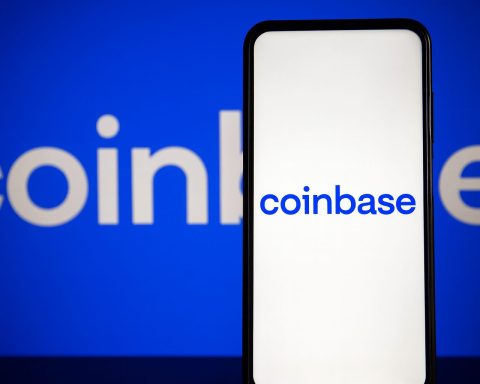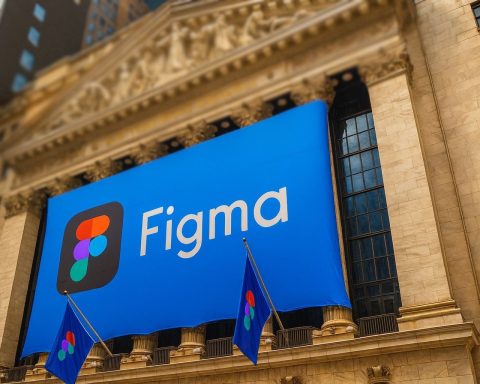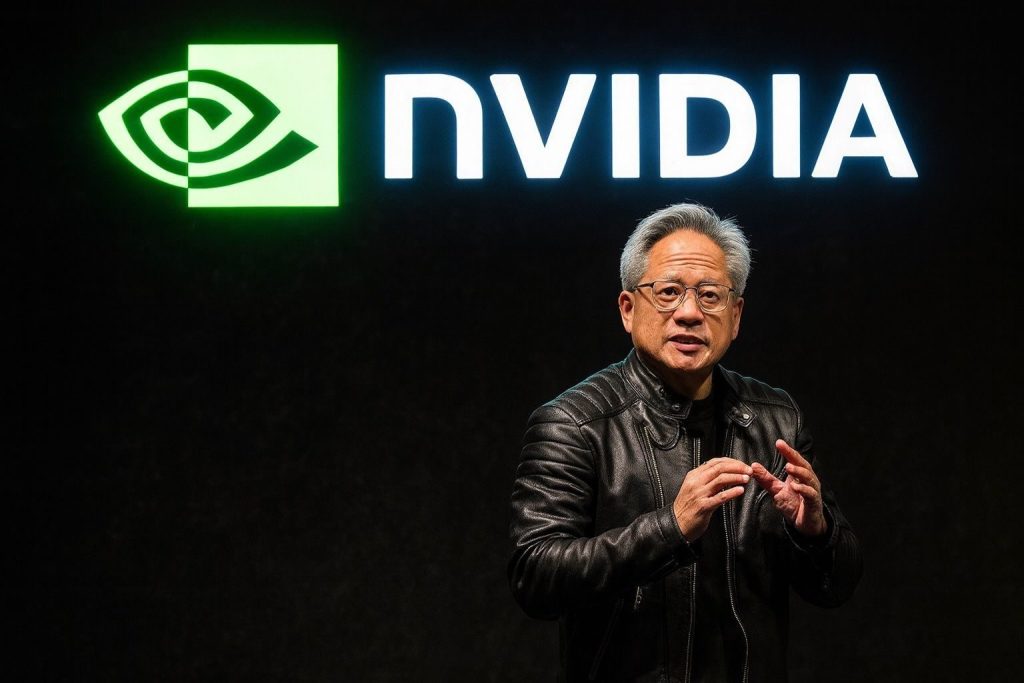Meta Platforms (NASDAQ: META) heads into today’s shortened Black Friday trading session still sitting well below its August peak, as investors weigh booming AI ambitions against an eye‑watering infrastructure bill and new chip partnership headlines.
As of early trade and pre‑market indications, Meta stock is hovering in the mid‑$630s, only slightly above Wednesday’s close of $633.61. That puts the shares roughly 20–25% below their mid‑August all‑time high near $796, after a sharp post‑earnings pullback in late October. [1]
At the same time, Wall Street’s view remains broadly positive: Meta still carries a “Moderate Buy” consensus rating and an average 12‑month price target in the low‑$800s, implying double‑digit upside from current levels if the Street is right. [2]
Below is a full rundown of what’s driving Meta stock on November 28, 2025 – from the latest AI chip news and capital‑spending plans to institutional flows, analyst upgrades and holiday‑season risks.
1. Meta stock price today: stabilising after a deep correction
- Last full close: Meta finished the last full trading session on November 26, 2025 at $633.61, down about 0.4% on the day. [3]
- Today’s indication: Pre‑market quotes for this Black Friday half‑day show Meta trading modestly higher, around the $635–$637 area, suggesting a relatively calm open after a volatile month. [4]
- Trading range: Over the past 12 months, Meta has traded between roughly $480 and $796, with the high coming in mid‑August as AI optimism peaked. [5]
Despite the recent pullback, Meta remains a mega‑cap giant:
- Market cap: Around $1.6–1.8 trillion, depending on the live print you use. [6]
- Valuation: MarketBeat pegs Meta at about 28× earnings with a PEG ratio near 1.3, while some commentators argue that on adjusted earnings (excluding tax distortions) the stock looks cheaper than most AI mega‑caps. [7]
From a purely technical angle, Meta is now trading below both its 50‑day and 200‑day moving averages (around $686 and $706 respectively), a sign that momentum has cooled. [8]
2. What triggered the sell‑off: Q3 earnings, a tax shock and an AI capex surge
The current Meta stock story starts with Q3 2025 earnings, reported on October 29.
Strong operational quarter…
Meta’s core business delivered another blockbuster quarter: [9]
- Revenue: $51.24 billion, up 26% year‑on‑year.
- Operating income: $20.5 billion, up about 18%.
- Operating margin: roughly 40%, still extremely strong for a company of this size.
- Ads engine: Ad impressions rose around 14%, while the average price per ad increased about 10%, reflecting both volume and pricing power.
- User base: Family daily active people climbed to about 3.54 billion, up 8% versus a year ago.
On an underlying basis, adjusted earnings per share (EPS) would have been around $7.25, comfortably ahead of the roughly $6.74 consensus estimate. [10]
…but GAAP profit was crushed by a one‑time tax charge
The headline numbers looked far uglier because of a major non‑cash tax item:
- Meta recognised a $15.93 billion one‑time tax charge linked to changes in U.S. corporate tax rules and a valuation allowance on deferred tax assets. [11]
- As a result, GAAP net income collapsed to $2.7 billion, down more than 80% year‑over‑year, and GAAP EPS fell to $1.05 versus $6.03 a year earlier. [12]
Management has stressed that this tax hit doesn’t affect cash flow and that actual cash tax payments should fall in coming years – but headline‑driven algorithms and investors still reacted to the apparent earnings plunge. [13]
The real shock: AI and data‑center spending
What really spooked the market was the updated capital‑expenditure (capex) outlook:
- Meta lifted its 2025 capex guidance to $70–72 billion, up from prior estimates of $66–72 billion, with most of the increase earmarked for AI‑focused data centers and infrastructure. [14]
- Management also signaled that 2026 spending will grow even faster, saying capex dollar growth is expected to be “notably larger” next year and that total expenses in 2026 will rise at a significantly higher percentage rate than in 2025. [15]
Third‑party analyses now model Meta’s 2026 AI infrastructure spend “north of $100 billion”, more than double the roughly $39 billion spent in 2024, though that figure comes from analyst extrapolations rather than official guidance. [16]
That combination — stellar top‑line growth, but a looming wall of AI capex — is the tension currently driving Meta stock.
3. AI chip talks with Google: strategic pivot or margin headache?
One of the biggest fresh headlines hanging over Meta today is its reported AI chip partnership talks with Google.
According to Reuters and other outlets, Meta is in advanced discussions to: [17]
- Spend billions of dollars on Google’s custom AI chips (TPUs) for Meta data centers beginning around 2027.
- Potentially rent TPU capacity via Google Cloud as soon as next year, adding a cloud‑based layer to its AI compute strategy.
If finalised, the deal would:
- Diversify AI hardware away from Nvidia – Meta is one of Nvidia’s largest customers, and shifting a slice of its future workloads to Google TPUs would reduce single‑vendor dependence. [18]
- Potentially improve economics for some AI workloads if Google’s chips are cheaper or better optimised for certain tasks. [19]
- Underscore just how massive Meta’s planned AI build‑out is, given that the reported spending would sit on top of already huge internal capex. [20]
The knock‑on effects have been visible across the semiconductor space:
- Reports of the Meta‑Google talks helped drive Alphabet shares sharply higher, pushing its market value toward $4 trillion. [21]
- At the same time, Nvidia and AMD stocks have come under pressure, with AMD suffering what analysts describe as its worst month since 2022 as investors worry about rising AI chip competition. [22]
For Meta shareholders, the news is a double‑edged sword: it strengthens the long‑term AI story but keeps the focus firmly on how much the company will have to spend to stay ahead.
4. Fundamental backdrop: still a cash‑machine, with rising shareholder returns
Despite the noisy headlines, Meta’s underlying financial engine remains formidable. Q3 and recent filings show: [23]
- Core ad revenue around $50 billion in Q3, up about 26% year‑over‑year.
- Family of Apps (Facebook, Instagram, WhatsApp, Messenger) remains highly profitable, while Reality Labs continues to post multi‑billion‑dollar losses.
- Free cash flow remains strong even after elevated capex, thanks to high margins and tight cost control outside of AI infrastructure.
Meta has also accelerated direct cash returns to shareholders:
- The company now pays a quarterly dividend of $0.525 per share (about $2.10 annually), for a yield around 0.3% at current prices. [24]
- Meta continues to run large share repurchase programs, buying back billions of dollars’ worth of stock each quarter. Q3 filings show several billion dollars of buybacks alongside the dividend. [25]
This mix — high‑margin ad business + growing dividend + buybacks — is a key pillar of the bull case even as free cash flow is temporarily squeezed by record‑high capex.
5. Analysts on November 28: broadly bullish, but more cautious
Fresh research notes out today highlight a split but still positive Wall Street stance.
Street targets: $720–$920 and a “Moderate Buy”
A widely cited MarketBeat summary of analyst views shows: [26]
- Rating distribution: 4 analysts at Strong Buy, 38 at Buy, and 8 at Hold.
- Consensus rating: “Moderate Buy.”
- Average 12‑month price target: about $823.93.
- Target range: some surveys place Street targets roughly between the mid‑$500s and about $1,100, underlining just how wide the disagreement is on fair value. TechStock²+1
Recent individual moves:
- BNP Paribas Exane started coverage on November 24 with an Outperform rating and an $800 target, citing Meta as one of the key AI platforms to own. [27]
- Freedom Capital Markets upgraded Meta to Buy from Hold with an $800 target earlier in November, praising robust ad trends and early monetisation of WhatsApp and AI‑driven tools. [28]
- Cantor Fitzgerald trimmed its target from $830 to $720 while keeping an Overweight rating, warning that rising AI and cloud‑infrastructure costs could pressure margins and free cash flow in 2026. [29]
- Prior research from Morgan Stanley, Bernstein, Stifel, Jefferies and others still carries targets between the high‑$800s and low‑$900s, even after small downward revisions post‑earnings. [30]
Several opinion pieces this week — on platforms such as Nasdaq, Motley Fool and Yahoo Finance — frame Meta as “one of the cheapest mega‑cap AI stocks” on forward earnings and discounted‑cash‑flow models, with some DCF work suggesting the shares could be 40%+ undervalued. Those bullish takes, however, depend heavily on assumptions about how fast AI spending tapers and how quickly new products monetize. [31]
6. Institutional money and insiders: who’s buying META, who’s trimming?
Today also brings a fresh batch of institutional ownership filings and insider disclosures.
Big asset managers: mostly adding
MarketBeat’s latest Q2 and Q3 13F summaries show that institutional investors still own roughly 80% of Meta’s float. [32]
Key moves reported on November 28:
- Nomura Asset Management
- Increased its Meta stake by 9.7% in Q2 to about 995,985 shares, worth roughly $735 million at the time of filing.
- Meta now represents about 2% of Nomura’s portfolio and is its 6th‑largest holding. [33]
- Dorsey & Whitney Trust Co.
- Raised its holdings by 16.6%, purchasing around 3,000 additional shares to reach 21,183 shares, valued near $15.6 million.
- Meta accounts for roughly 0.8% of the firm’s portfolio and is its 24th‑largest position. [34]
- Johnson Financial Group
- Went the other way, cutting its stake by about 55.7% to just over 500 shares, worth about $371,000, in Q2. [35]
Beyond traditional asset managers, Cathie Wood’s ARK Invest has been actively trading around the volatility:
- Barron’s and crypto/stock site coverage report that ARK recently bought roughly 33,800 Meta shares, worth about $21.4 million, as part of a broader bet on AI and crypto‑linked names, while trimming holdings in AMD and Palantir. [36]
Insider activity: modest selling, not a wholesale exit
Recent filings also highlight relatively small insider sales:
- MarketBeat notes that Meta executives and directors sold about 41,959 shares last quarter (around $26.8 million in value), including transactions by the chief accounting officer and at least one director. [37]
- Even after these moves, insiders still hold around 13–14% of the company. [38]
So far, the pattern looks more like routine diversification and pre‑planned 10b5‑1 sales rather than a broad insider rush for the exits.
7. New AI data centers, product roadmap and holiday‑season risks
Beaver Dam AI data‑center campus
Meta is backing up its AI talk with concrete infrastructure projects. Earlier this month, the company announced a new AI‑optimised data‑center campus in Beaver Dam, Wisconsin, its 30th data center globally. TechStock²
Key details:
- Investment of more than $1 billion.
- Roughly 700,000 square feet of facilities on 500+ acres.
- Expected to come online around 2027.
- Designed to run on 100% renewable energy, alongside about $200 million of energy‑infrastructure upgrades and restoration of roughly 570 acres of wetlands and prairie.
For bulls, this underlines Meta’s determination to build a world‑class AI compute backbone; for bears, it’s another reminder that the capex bill keeps rising.
AI roadmap: Llama, new products and Threads growth
Recent reporting also highlights Meta’s broader AI and product ambitions: TechStock²
- Its open‑weight Llama models (Llama 4 and beyond) continue to evolve, and have been approved for use by some U.S. government agencies, opening the door to more public‑sector deployments.
- Meta is testing a project known as “Luna”, an AI‑driven personalised morning brief for Facebook users that blends news and social content, according to a Washington Post report.
- Threads, Meta’s X/Twitter rival, is estimated by third‑party trackers to have reached roughly 400 million monthly users and around 150 million daily users, showing that experimental products are scaling even if monetisation is still early.
Holiday ads and “Glitchmas” chatter
With Black Friday and Cyber Monday underway, the ad platform is in the spotlight:
- Industry reporting from AdExchanger describes 2025 as another “Glitchmas” for some ecommerce advertisers, who have complained about campaign‑creation bugs and AI‑driven creative issues in Meta’s ad tools. TechStock²
- Meta says its systems continue to help millions of businesses and that it has addressed specific bugs, denying any systemic problem. TechStock²
- Last year’s Black Friday/Cyber Monday data from analytics firm Triple Whale suggested Meta captured close to 68% of paid‑social ad spend among tracked platforms, highlighting how central it is to ecommerce performance marketing. TechStock²
Any perception that Meta’s ads manager is glitchy during a key revenue window could feed the bear narrative on execution risk, even if the dollar impact is hard to quantify in real time.
8. Macro backdrop: AI trade under scrutiny, Fed cut hopes support the tape
Today’s trading also sits within a broader macro story that directly affects high‑multiple AI names like Meta.
A new Reuters “Week Ahead” piece notes that: [39]
- U.S. stocks have just rebounded from their biggest pullback since April, helped by rising conviction that the Federal Reserve will cut rates again in December.
- Technology and AI leaders remain volatile as investors question the timing of returns on huge AI infrastructure budgets.
- The AI trade is increasingly sensitive to news about profitability, not just growth, with big moves in Nvidia, Alphabet and now Meta driven by chip‑supply headlines and capex commentary.
Put simply, Meta is no longer getting a free pass for aggressive AI spending. With markets already warier about frothy valuations, every dollar of new capex is being weighed against clear evidence of future profit.
9. Key numbers to know about Meta stock on November 28, 2025
For investors and traders following META today, here are the main figures in one place (all approximate and subject to change):
- Share price: Mid‑$630s in Black Friday trading, vs. $633.61 close on November 26. [40]
- 52‑week range: About $479.80 – $796.25. [41]
- Market cap: Around $1.6–1.8 trillion. [42]
- Valuation: Roughly 28× trailing earnings, PEG near 1.3, with some analysts arguing the stock trades near 20× on adjusted numbers. [43]
- Q3 2025 revenue: $51.24 billion, up 26% YoY. [44]
- Underlying Q3 EPS (ex tax charge): About $7.25 vs. $6.74 consensus. [45]
- Capex guidance: $70–72 billion for 2025, with management flagging even higher spending in 2026. [46]
- Dividend: $0.525 per quarter (~0.3% yield), payout ratio around 9%. [47]
- Street view: “Moderate Buy” consensus, average target roughly $824. [48]
10. Bottom line: Meta stock’s November 28 setup
Going into today’s shortened Black Friday session, Meta stock sits at the crossroads of several powerful forces:
- The bull case:
- Double‑digit revenue growth powered by AI‑driven engagement and an unmatched social‑ad network. [49]
- A still‑huge operating margin and strong free cash flow, even after higher capex. [50]
- A rising dividend, ongoing buybacks and a consensus of mostly Buy ratings with targets well above today’s price. [51]
- The bear case:
- AI infrastructure budgets that could exceed $100 billion annually within a couple of years, with no guarantee of matching profit growth. [52]
- New hardware dependencies as Meta explores Google TPUs and other cloud‑based solutions, complicating its cost structure. [53]
- Regulatory and legal headwinds in the U.S. and EU, plus operational risks around ad platform reliability during peak shopping season. [54]
For now, the market seems to be re‑rating Meta from “AI darling” to “show me” stock: investors want proof that massive investments in AI, data centers and new products will translate into durable earnings — not just headline growth.
As always, this article is for informational purposes only and is not investment advice. Anyone considering Meta stock should weigh the company’s AI‑driven growth potential against the clear risks from soaring capital expenditures, regulatory scrutiny and competitive pressure, and base decisions on their own research, financial situation and risk tolerance (or professional advice).
References
1. www.nasdaq.com, 2. www.marketbeat.com, 3. www.nasdaq.com, 4. stockanalysis.com, 5. www.marketbeat.com, 6. www.marketbeat.com, 7. www.marketbeat.com, 8. www.marketbeat.com, 9. investor.atmeta.com, 10. investor.atmeta.com, 11. investor.atmeta.com, 12. investor.atmeta.com, 13. investor.atmeta.com, 14. investor.atmeta.com, 15. investor.atmeta.com, 16. blockonomi.com, 17. www.reuters.com, 18. www.reuters.com, 19. www.barrons.com, 20. www.reuters.com, 21. www.barrons.com, 22. www.gurufocus.com, 23. investor.atmeta.com, 24. www.marketbeat.com, 25. investor.atmeta.com, 26. www.marketbeat.com, 27. finviz.com, 28. finviz.com, 29. finviz.com, 30. www.marketbeat.com, 31. finance.yahoo.com, 32. www.marketbeat.com, 33. www.marketbeat.com, 34. www.marketbeat.com, 35. www.marketbeat.com, 36. blockonomi.com, 37. www.marketbeat.com, 38. www.marketbeat.com, 39. www.reuters.com, 40. www.nasdaq.com, 41. www.marketbeat.com, 42. www.marketbeat.com, 43. www.marketbeat.com, 44. investor.atmeta.com, 45. investor.atmeta.com, 46. investor.atmeta.com, 47. www.marketbeat.com, 48. www.marketbeat.com, 49. investor.atmeta.com, 50. investor.atmeta.com, 51. www.marketbeat.com, 52. blockonomi.com, 53. www.reuters.com, 54. investor.atmeta.com







